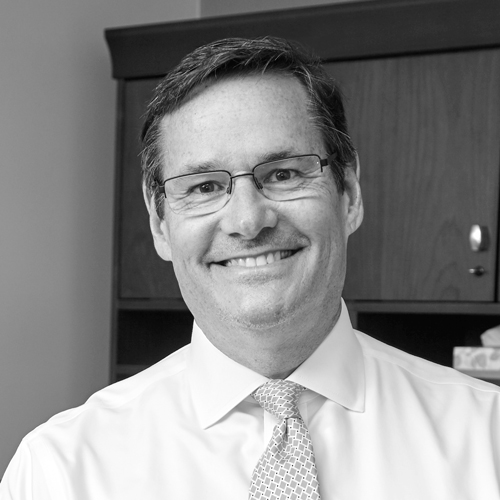Like many students, Jason Atkins didn’t have a well-formulated plan when he graduated high school. But instead of taking a year off to explore his options, Atkins decided to work with nuclear reactors. He entered the navy’s nuclear program as an electronics technician and was immersed in rigorous education for a little more than two years.
By the end of his training, Atkins’s appetite for learning was insatiable and further pushed him to complete his formal education. He was accepted into a program through a navy nursing Reserve Officers’ Training Course (ROTC) scholarship and found his calling as a registered nurse in a navy critical care unit in San Diego.
Even in those early experiences, Atkins was more than impressed by the impact of technology, and even more so with its untapped potential. He was inspired to discover how technology could expand and improve patient care, particularly in the realm of medical and nursing informatics, so he went on to get a master’s degree in biomedical informatics and further merge his interests in healthcare and technology.
These days, Atkins’s natural ability to evaluate technology and its impact on clinical care remains a major asset in his work as chief nursing information officer at Emory Healthcare. His work naturally corresponds with Emory’s CMIO—his counterpart, who focuses on physician workflow—and they both work closely with the CIO, who is responsible for IT architecture and infrastructure. Collaboration is key between the three leaders as they work to understand the complete technology environment at Emory.
“We know that one of us can’t change a single thing without a downstream impact,” Atkins says.
But Atkins’s role as chief nursing information officer is unique because he is responsible for meeting the technology needs of the largest workforce in the organization: nurses. And because healthcare regulatory and legal requirements continue to expand, nurses are not only tasked with the responsibility of providing care to their patients, but now they also have the added burden of using technology to record and coordinate care and manage information flows.
These new challenges have created endless opportunities for Atkins and his team. “One of my main focus areas is figuring out how to reduce the burden of documentation and manual transcription for nurses and improve communication between care team members,” he says.
It’s a big job, but the team has made substantial strides in the nearly three years that Atkins has been in this role. They’ve automated the medical administration process to improve medication administration safety, for example, and they’re currently working on the ability to pull information from infusion pumps and automatically transcribe it to patients’ EMRs.
“Nurses are the key to teaching individuals what healthcare should look like and how to navigate patient-centered, needs-oriented care.”
“We’re always looking at which medical devices are creating data that needs to be transcribed into the medical record and figuring out how it can be automatically added to the EMR,” he says.
The nursing informatics team that makes all of this happen at Emory is surprisingly lean and includes only three nursing informatics specialists in addition to Atkins. They work closely with the IT department to evaluate, test, and focus on the technology itself. But when Atkins joined Emory, he not only brought his skill for technology, but also his passion for education.
“I’ve built an education team of nursing informatics educators,” Atkins says. “It’s made of five nurses with a variety of backgrounds and experiences, and they compliment the IT specialists by learning the technology and teaching it to other nurses.” These educators teach in classroom or web-based training settings, or occasionally as a unit-based service to increase nurses’ confidence in decision-making.
Conversely, these educators also work with clinicians to identify needed changes in existing technology, which they then feed back to Atkins and the informatics specialists. This valuable information has required
marketing the education team as approachable and accessible and making them widely visible across the organization. “They all practice clinical care directly one day a week, and the rest of the time they preach what they practice,” he says.
Taking education a step further, Atkins is equally passionate about teaching patients about their own health and care options. Informing patients about the disease process, medication dosage, and appropriate times to take the next steps are crucial components of moving from service-based to value-based care.
This transition has also shifted the focus to keeping patients healthy and decreasing visits to the care team, thereby moving the greatest inherent risk to that longer time between care encounters. This extended time puts more responsibility on the patients themselves and requires them to know more information.
And who are the conduits of such information? The answer, of course, is nurses. “They are the key to teaching individuals what healthcare should look like and how to navigate patient-centered, needs-oriented care,” says Atkins, who looks to nurses as a necessary lubricant of integrated workflows. Not only do nurses spend the most time interacting with the patient, but they are also responsible for communicating about the patient with service providers.
“Because of that, nurses will help us cross this transition of care in a safer, more holistic way,” Atkins notes. This passion for serving others has grounded him throughout his career and has manifested in a highly collaborative, team-centric leadership style. “Whether it is your country, your patients, or the job of the person taking care of the patient,” Atkins says, “service is what it’s all about.”

